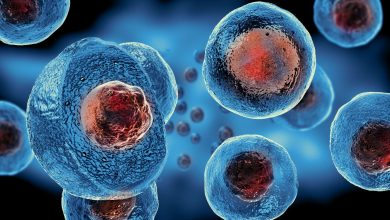How Is Syphilis Transmitted?

How Is Syphilis Transmitted?
Syphilis is one of the sexually transmitted diseases that causes very serious complications (undesirable consequences) in the long term if not treated correctly. The disease agent is a bacterium called Treponema pallidum.
It has almost always had a high incidence in developing countries. In developed countries, the problem is more pronounced in lower socioeconomic environments, among active sexually active youth and young adults.
How Is It Transmitted?
It is usually transmitted by sexual contact. Less blood transfusions, kissing, etc. can be transmitted by roads. Syphilis is also transmitted from person to person by direct contact with wounds caused by bacteria (chancre). These wounds can be seen in the external genital organs, vagina, anus, rectum, mouth and lips. Syphilis can be passed from an infected mother to her unborn baby. The disease is not inherited.
Who is in the Risk Group?
Unprotected sexual intercourse and multiple sexual partners greatly increase the risk of illness.
What are the Symptoms?
The findings begin to appear within 3 weeks after sexual intercourse. The disease can be seen in three stages.
First Stage: The bacteria entering the body spreads through the lymph and blood. After infection with syphilis, the time between the appearance of the first symptoms is 10-90 days (average 21 days). In the first stage, a typical syphilis wound is seen. A hard, round-oval, single, clean base, watery and painless wound called chancre is formed. Sometimes it can be more than one. The wound is at the entrance to the body. It is easily overlooked because it is painless. Most patients also have unilateral, painless lymph node enlargement that is not attached to the skin during this period. The wound lasts for 3-6 weeks and heals with or without treatment. Even if the wound disappears spontaneously, treatment is essential so that the infection does not pass to the second stage.
Second Stage: It is the period in which bacteria spread to the whole body. Symptoms such as fever, headache and sore throat, muscle-joint pain, weakness, loss of appetite, weight loss, nausea and vomiting occur approximately 1-6 months after the removal of the chancre. During the second phase, skin rashes and / or sores can be seen.
This phase begins with skin rashes that occur in one or more parts of the body. The rash may appear after the first wound has healed or several weeks after the wound has healed. Rashes are rough, raised, red, reddish brown spots. It is common on the palms of the hands and soles of the feet. It usually does not itch and sometimes it is too pale to be noticed. Similar to these rashes, lesions in the form of gray-white plaques are also seen on the mucous membranes of the mouth, pharynx and genital area.
Other findings in this period: Some patients may have nervous system involvement, joint, liver, eye, and kidney involvement. If syphilis is not treated correctly at this stage, it progresses to the next stage.
Hidden and Late Stage: The latent stage begins with the disappearance of previously existing findings. If syphilis is not treated, it can remain in the body for years without any symptoms. In about 15% of untreated cases, it can be much more serious 10-30 years after the onset of late-stage infection. Although there is no clinical finding in the patient during this period, the presence of infection can be detected with diagnostic tests and the patient is contagious during this period.
Findings in this period: Difficulty in coordination of muscle movements, paralysis, numbness, blindness, and mental disorders may be seen.
Disease-related damage is seen in the late stage of syphilis. The patient at this stage is not contagious. The disease can cause death by damaging internal organs (such as heart, liver, brain). In untreated patients, heart and vascular involvement and related chest pain and infarction can be seen.
The nervous system may be involved in every stage of syphilis, and this involvement may be asymptomatic, as well as causing symptoms such as unconsciousness, paralysis, gait and balance disorder, dementia, urinary incontinence, and speech disorder.
Pregnant syphilis patients can infect their unborn baby with the infection. The disease can cause premature birth, stillbirth, or a low birth weight baby. Necessary tests should be done during pregnancy and delivery, if the test results are positive, emergency treatment should be started. If the mother with syphilis in the first or second stage is not treated, stillbirth, miscarriage and premature birth may occur. No abnormality has been reported in a few rare cases.
The most contagious period of the mother is the early stage. In the early syphilis stage, the transition to the baby is more. The passage of the agent from a mother with syphilis to the fetal circulation starts from the 9th week of pregnancy. Findings occur in the baby from the first 3 months. After the 5th month of pregnancy, the agent covers all the systems of the fetus and causes congenital syphilis in the fetus. Liver-spleen enlargement, jaundice, anemia, rashes, lymph node enlargement, eye-bone involvement, meningitis, nerve paralysis can be seen. For this reason, it is always necessary to consider syphilis in miscarriages and stillbirths after the 5th month of pregnancy. If there is chancre in the mother’s genital area during birth, that is, if the mother is in the first period of syphilis, the baby can be infected. Then, signs of acquired syphilis appear in the baby. Late stage syphilis findings are seen after 2 years of age. Special tooth structure called Hutchinson’s teeth, hearing defect, mental retardation (mental retardation), saddle nose are seen.
An infected baby can be born without signs of illness. However, if not treated urgently, serious health problems may develop within a few weeks. Health problems such as cataracts, deafness and convulsions (having seizures) can occur in untreated babies and result in death.
In addition to cardiovascular and neurological complications, it can also lead to problematic pregnancy such as stillbirth and congenital syphilis and birth of diseased babies.
How Is It Diagnosed?
Infective chancre, plaque mucous and condyloma lath lesions play a role in the transmission of syphilis. In addition, although syphilis can also be transmitted through blood, this route of transmission has lost its importance due to the control of blood for T. pallidum antibodies today. Although dark field microscopy is mentioned in the diagnosis, this method is not widely used because of its difficulty in use and lack of definitive diagnosis. Today, the diagnosis is made by nontreponemal (RPR, VDRL) and treponemal (FTA-ABS, TPHA) tests based on serology. It is useful to perform these tests routinely in pregnant women.
How is it treated?
Correct use of antibiotics is important in treatment, but treatment cannot reverse the damage caused by the infection. While short-term antibiotic treatment is sufficient for early-stage syphilis, longer-term treatments are applied in patients with latent and late-stage syphilis.
Having had syphilis does not protect against this disease. Even if a successful and correct treatment is applied, you can get sick again by taking the bacteria again.
Penicillin is the first option used in every stage of this disease and usually successfully treats the disease. After treatment, the patient should be monitored at 3-6 month intervals until nontreponemal tests are negative. Since the tests can sometimes take a long time (several years) to become negative, it is necessary to be patient in this regard.

If you are pregnant and have syphilis, you can infect your unborn baby. Syphilis can cause premature birth, stillbirth or low birth weight baby. During pregnancy and delivery, you should have your tests done immediately, and if your test results are positive, you should seek emergency treatment. The likelihood of fetal damage is reduced in a mother with late syphilis. Especially after 4 years, even with untreated syphilis the danger is extremely low. If the mother who had syphilis for a long time and who has untreated late syphilis becomes pregnant, she can deliver a healthy baby. However, even if the baby is healthy, it should be treated as syphilitic. An infected baby can be born without signs of illness. However, if not treated urgently, serious health problems may develop within a few weeks. Health problems such as cataracts, deafness and convulsions (having seizures) can occur in untreated babies and result in death.
What are the Ways of Protection?
To avoid syphilis; condom should be used, suspicious sexual intercourse should be avoided and long-term, monogamous sexual relations should be preferred. When symptoms such as wounds, discharge or itching in the genital area are observed, a specialist physician should be consulted and sexual intercourse should be avoided. A mother who has a positive syphilis test should not breastfeed her baby.





